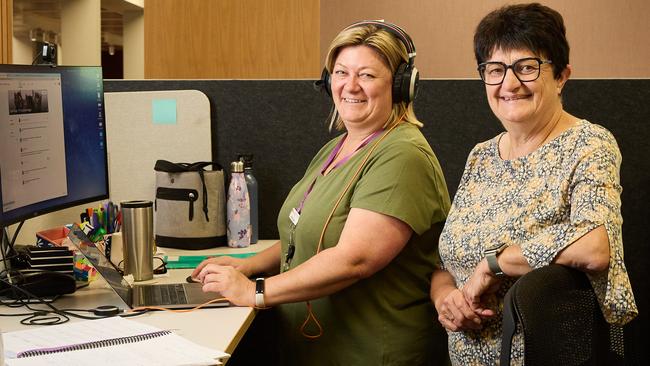Open Access College at Marden teaches 1000 children who do not want to go to South Australian schools
How many students does your child’s teacher have to deal with? We’ve compared SA’s teacher-student ratios – see how your school stacks up.
Schools Hub
Don't miss out on the headlines from Schools Hub. Followed categories will be added to My News.
More than 1000 South Australian children with mental health issues are receiving online learning from a public school with the biggest student-to-teacher ratio in the state.
Latest official figures from 2021 released nationally show Open Access College had 115 teachers for 4726 students – a ratio of 40.9 to each teacher compared with the state average of 13.4 per teacher.
The Advertiser can reveal the 2021 ratios for every school in the state, with Echunga Primary next highest at 21.3, followed by Ardtornish Primary, Gulfview Heights Primary and Whitefriars School – all around the 20 mark.
Open Access principal Julie Taylor said the R-12 government school’s enrolment since had reduced, with 190 teachers and support staff now providing virtual education to almost 4477 students (24 students per teacher).
Ms Taylor said her student body included a growing number of children and teenagers who were not attending school because of psychological issues related to anxiety, depression, bullying, autism or gender diversity.

Ms Taylor said the number of South Australian schoolchildren opting out of mainstream education to attend Open Access College, formed by the amalgamation of the Correspondence School and School of the Air in 1991, had steadily increased during her 17 years as principal.
“They must provide medical evidence that they are not able to attend mainstream schools and they believe that learning online may be a viable option for them,” she said.
“That number is growing and every year we are seeing an increase.
“It does concern me that we have a growing number of kids, from the age of six to 12, and sometimes five, that would normally be in a face-to-face school but things are not working out.”
Ms Taylor said two psychologists, a social worker, speech therapist and youth workers supported teachers with managing the students.
“Our aim is to help turn things around and get them back into schools,” she said.
“It is not good for students to be out of mainstream schools for numerous years.”
Ms Taylor said other Open Access College students included more than 40 living on Outback stations, elite teenage athletes or dancers required to travel for training and almost 600 students attending over 170 public or non-government, independent schools without specialist teachers in some subjects.
There were a further 2800 students studying languages.
“We have a language partnership program as language is compulsory up to Year 8 so we provide teachers in Chinese, Indonesian, Japanese, Spanish and French to 49 schools across the state,” she said.
Ms Taylor said the teaching methods used by Open Access College had changed significantly during its 31 years of operation.
The school’s teachers spend their days in virtual classrooms at a recently refurbished building at Marden and Port Augusta delivering lessons across the state.
“We started as the School of Correspondence posting printed material backwards and forwards, then used two-way radios on the School of Air,” said Ms Taylor.
“Then we have had the developments with digital technology over the past ten years, which have just been amazing to connect with our students and their learning.
“It’s given us the ability to give instant feedback, which has been a game changer.”
Ms Taylor said similar distance schools operated in all Australian states.
“People say we are the school with no students, we have over 4000 students,” she said.
More Coverage
Read related topics:Best in Class





